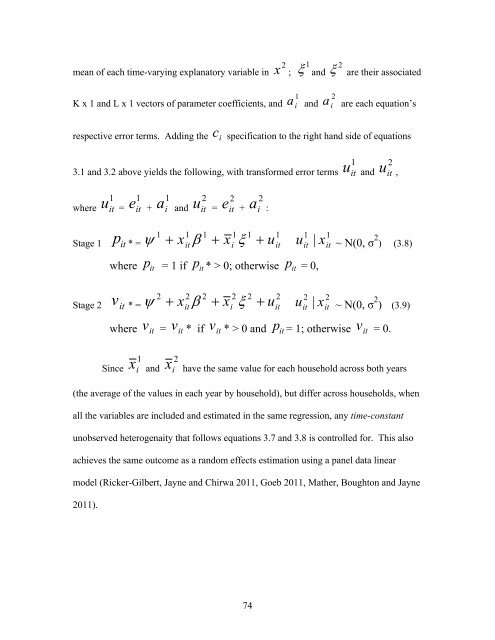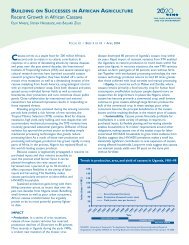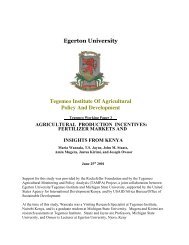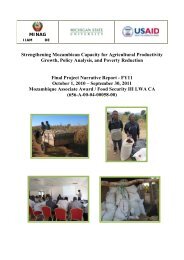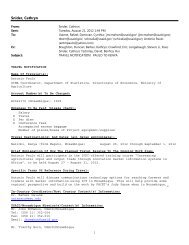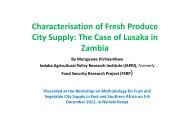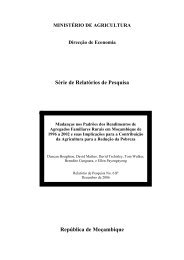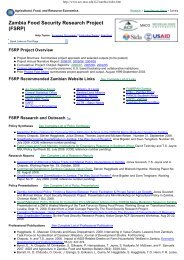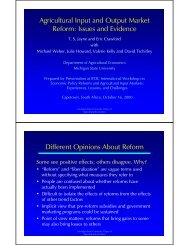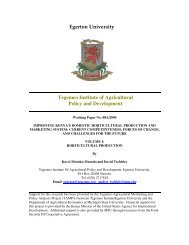Thesis Re-print: Does Selling Fruits or Vegetables - Department of ...
Thesis Re-print: Does Selling Fruits or Vegetables - Department of ...
Thesis Re-print: Does Selling Fruits or Vegetables - Department of ...
Create successful ePaper yourself
Turn your PDF publications into a flip-book with our unique Google optimized e-Paper software.
mean <strong>of</strong> each time-varying explanat<strong>or</strong>y variable in<br />
K x 1 and L x 1 vect<strong>or</strong>s <strong>of</strong> parameter coefficients, and<br />
74<br />
2 1 2<br />
x ; and are their associated<br />
1<br />
a i and<br />
2<br />
a i are each equation’s<br />
respective err<strong>or</strong> terms. Adding the c i specification to the right hand side <strong>of</strong> equations<br />
3.1 and 3.2 above yields the following, with transf<strong>or</strong>med err<strong>or</strong> terms<br />
where<br />
1<br />
u it =<br />
1<br />
e it +<br />
Stage 1 it p * =<br />
Stage 2 it v * =<br />
1<br />
<br />
1<br />
a i and<br />
2<br />
u it =<br />
2<br />
e it +<br />
<br />
2<br />
a i :<br />
1 1 1 1<br />
xit xi<br />
<br />
where it p = 1 if p it * > 0; otherwise p it = 0,<br />
2<br />
<br />
<br />
2 2 2 2<br />
xit xi<br />
<br />
u<br />
u<br />
1<br />
it<br />
2<br />
it<br />
1<br />
u it and<br />
2<br />
u it ,<br />
1 1<br />
it | it x u ~ N(0, σ 2 ) (3.8)<br />
2 2<br />
u it | xit<br />
~ N(0, σ 2 ) (3.9)<br />
where v it = v it * if v it * > 0 and p it = 1; otherwise v it = 0.<br />
Since<br />
1<br />
x i and<br />
2<br />
x i have the same value f<strong>or</strong> each household across both years<br />
(the average <strong>of</strong> the values in each year by household), but differ across households, when<br />
all the variables are included and estimated in the same regression, any time-constant<br />
unobserved heterogenaity that follows equations 3.7 and 3.8 is controlled f<strong>or</strong>. This also<br />
achieves the same outcome as a random effects estimation using a panel data linear<br />
model (Ricker-Gilbert, Jayne and Chirwa 2011, Goeb 2011, Mather, Boughton and Jayne<br />
2011).


